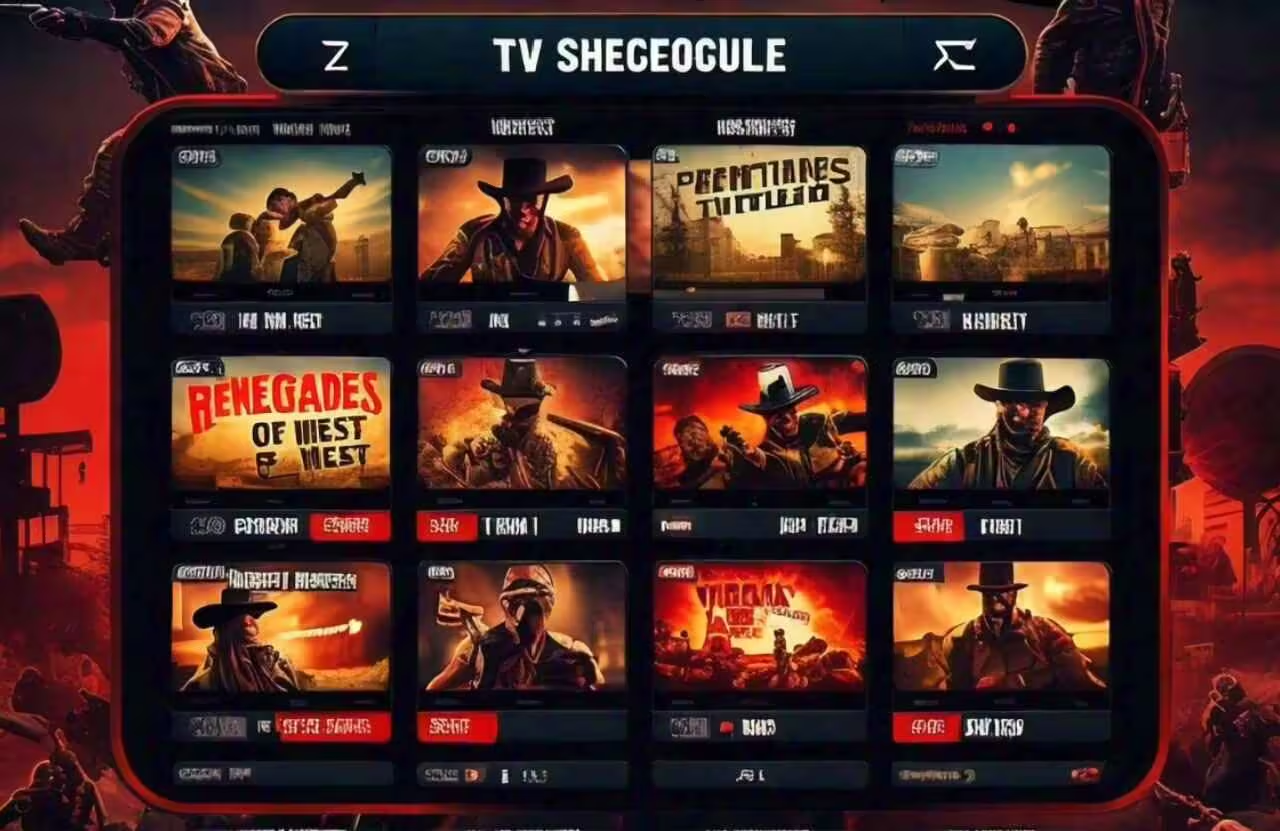- Homepage
- Entertainment
- I See It All on TV Sheet Music Vocal: A Comprehensive Guide
I See It All on TV Sheet Music Vocal: A Comprehensive Guide
This blog post will serve as an extensive guide to ” I See It All on TV sheet music vocal ” , offering insights into the song’s history, its structure, and tips for performing it. Music has a unique way of capturing the essence of emotions, stories, and experiences. One song that has managed to encapsulate the nostalgia and bittersweet memories of simpler times is “I See It All on TV.” Whether you’re a vocalist looking to perfect your rendition of this classic or a musician hoping to add it to your repertoire, understanding the sheet music and vocal intricacies is crucial.
Table of Contents
ToggleThe History of “I See It All on TV”
Origins of the Song
“I See It All on TV” emerged during a time when television was becoming a central part of everyday life. The song reflects on how television shaped people’s perceptions of the world around them, serving as a window into events, cultures, and stories far beyond their immediate surroundings. The song’s lyrics resonate with anyone who has ever felt the impact of television on their worldview.
The Songwriters and Their Vision
The song was penned by a team of talented songwriters who understood the cultural shift that television brought about. Their goal was to create a piece that not only highlighted the omnipresence of television in modern life but also questioned its influence. The sheet music and vocal arrangements were crafted to evoke a sense of longing and introspection, making the song a favorite among vocalists.
Understanding the Sheet Music
The Structure of the Song
Before diving into the performance aspects of “I See It All on TV,” it’s essential to understand the structure of the song as laid out in the sheet music. The song typically follows a standard verse-chorus-verse format, with a bridge that provides a change of pace and mood. Each section of the song is designed to build upon the last, creating a narrative that is both engaging and emotionally impactful.
Verse
The verses of “I See It All on TV” are where the storytelling shines. The lyrics in this section are more descriptive, setting the scene for the chorus. In terms of sheet music, the verses are usually written in a moderate tempo, allowing the vocalist to focus on conveying the story with clarity and emotion.
Chorus
The chorus is the heart of the song, where the main message is delivered. The sheet music for the chorus often features a more robust arrangement, with fuller chords and a melody that is both memorable and powerful. Vocalists are encouraged to bring out the emotion in this section, as it is the climax of the song’s narrative.
Bridge
The bridge serves as a contrast to the rest of the song, often introducing a new perspective or a shift in the storyline. In the sheet music, this section might feature a change in key or tempo, challenging the vocalist to adapt and bring a new energy to their performance.
Key Signature and Tempo
The key signature and tempo are crucial elements of the sheet music that significantly impact the song’s overall feel. “I See It All on TV” is typically written in a key that allows for a wide vocal range, giving the singer the opportunity to showcase their abilities. The tempo is moderate, providing a balance between a reflective mood and a forward-moving energy.
Chord Progressions
The chord progressions in “I See It All on TV” are designed to support the emotional journey of the song. The sheet music often includes rich, complex chords that add depth to the melody. For musicians accompanying a vocalist, understanding these progressions is key to providing the right mood and support throughout the performance.
Vocal Performance Tips
Preparing Your Voice
Before tackling “I See It All on TV,” it’s important to warm up your voice. The song’s range and emotional demands require a well-prepared vocal instrument. Start with simple scales to get your voice ready for the shifts in pitch and dynamics that the song requires.
Emotional Connection
One of the most critical aspects of performing “I See It All on TV” is connecting emotionally with the lyrics. The song’s narrative is deeply personal, and your performance should reflect that. Take the time to understand the story behind the lyrics and how they relate to your own experiences. This connection will make your performance more authentic and moving.
Breath Control and Phrasing
Given the song’s moderate tempo and emotional depth, breath control is essential. The sheet music will often indicate where breaths should be taken, but it’s up to the vocalist to ensure these breaths are controlled and do not interrupt the flow of the song. Practice the phrasing to maintain a smooth and continuous sound, especially during longer phrases.
Dynamics and Expression
“I See It All on TV” offers numerous opportunities for dynamic variation. Use the sheet music’s indications for crescendos and decrescendos to add contrast and interest to your performance. Pay attention to the emotional cues in the lyrics and reflect these in your vocal expression.
Accompaniment and Arrangement
Piano Accompaniment
The piano is a popular choice for accompanying “I See It All on TV.” The sheet music often includes a detailed piano arrangement that supports the vocal line without overpowering it. When playing the accompaniment, focus on maintaining a balance between the melody and the harmonies. The piano should enhance the vocalist’s performance, not compete with it.
Guitar Arrangements
For those who prefer a more intimate or acoustic sound, guitar arrangements of “I See It All on TV” are also available. The sheet music for guitar typically simplifies the chord progressions while still retaining the song’s emotional impact. Guitarists should focus on clean chord transitions and consider using fingerpicking techniques to add texture to the performance.
Orchestral Arrangements
In more formal or large-scale performances, “I See It All on TV” can be arranged for an orchestra. The sheet music for these arrangements will include parts for strings, woodwinds, brass, and percussion, creating a rich and full sound. Conductors and musicians should work closely with the vocalist to ensure that the orchestral arrangement complements the vocal performance.
Analyzing the Lyrics
Themes and Messages
The lyrics of “I See It All on TV” delve into themes of nostalgia, the passage of time, and the impact of media on our perceptions. The sheet music and vocal delivery should reflect these themes, bringing the words to life through careful interpretation and expression.
Key Phrases
Certain phrases in the song stand out for their emotional weight and significance. As a vocalist, identifying these key phrases and highlighting them in your performance can make the song more impactful. The sheet music may provide some guidance on which phrases to emphasize, but it’s ultimately up to the performer to decide how to bring these moments to the forefront.
Recording “I See It All on TV”
Preparing for a Recording Session
Recording “I See It All on TV” requires careful preparation. Before heading into the studio, ensure you have practiced the song thoroughly with the sheet music. Pay attention to your vocal tone, pitch accuracy, and emotional delivery. Consider recording a few practice sessions to identify areas for improvement.
Working with a Producer
If you’re working with a producer, share your vision for the song and discuss how to achieve the best possible recording. The producer can offer valuable insights into the arrangement, vocal performance, and overall sound. Be open to their suggestions and collaborate to create a recording that captures the essence of “I See It All on TV.”
Post-Production Tips
After recording, the post-production process begins. This includes editing, mixing, and mastering the track. Ensure that the final mix allows the vocals to shine, with the accompaniment providing the right balance of support. The sheet music can serve as a reference during this process to ensure that the arrangement stays true to the original composition.
Performing “I See It All on TV” Live
Preparing for a Live Performance
Live performances of “I See It All on TV” require a different approach than recording. The energy of a live audience can enhance your performance, but it also requires more attention to projection and stage presence. Practice performing the song in front of a mirror or a small audience to build confidence.
Engaging the Audience
Connecting with your audience is key to a successful live performance. Use the emotional depth of “I See It All on TV” to draw the audience in, making them feel the story you’re telling. Eye contact, facial expressions, and body language all contribute to this connection.
Handling Nerves
Even seasoned performers can experience nerves before a live show. To manage this, focus on your breathing, warm up your voice, and remind yourself of the preparation you’ve done. Trust in your understanding of the sheet music and the work you’ve put into your vocal performance.
Sheet Music Availability and Resources
Finding the Right Sheet Music
“I See It All on TV” sheet music is available from various sources, both online and in music stores. When selecting sheet music, ensure it is the correct arrangement for your needs, whether you’re looking for a piano-vocal score, a guitar tab, or an orchestral arrangement.
Online Resources
Several websites offer digital sheet music for “I See It All on TV,” making it easy to download and print. Some platforms also provide interactive sheet music, which allows you to adjust the key, tempo, and other elements to suit your performance needs.
Purchasing Sheet Music
When purchasing sheet music, consider buying from reputable sources to ensure you’re getting an accurate and legally licensed copy. Some editions may also include additional resources, such as backing tracks or performance notes, which can be valuable for both practice and performance.
The Enduring Appeal of “I See It All on TV”
One of the reasons “I See It All on TV” continues to resonate with audiences is its universal theme. The song taps into the collective experience of watching television and how it influences our thoughts and feelings. The sheet music and vocal arrangements reflect this by providing a platform for vocalists to convey these shared emotions. Whether it’s the nostalgia for childhood memories or a commentary on how TV has shaped our perceptions, the song’s message remains relevant across generations.
Personalizing Your Performance
To truly make “I See It All on TV” your own, consider how you can personalize your performance. This could involve making subtle changes to the phrasing, adjusting the tempo to suit your style, or even experimenting with different keys if the original key doesn’t fit your vocal range. The sheet music serves as a foundation, but your interpretation is what will make the performance unique and memorable.
Collaborating with Other Musicians
If you’re planning to perform “I See It All on TV” with other musicians, collaboration is key. Whether you’re working with a pianist, guitarist, or a full band, ensure that everyone is on the same page regarding the arrangement and interpretation of the song. Rehearsals should focus on blending the different elements seamlessly, with each musician understanding how their part fits into the overall performance. The sheet music can serve as a reference point during these rehearsals, helping to keep the arrangement cohesive.
Exploring Different Arrangements
While the original arrangement of “I See It All on TV” is undoubtedly powerful, exploring different arrangements can breathe new life into the song. For example, an acoustic version might strip back the instrumentation to focus more on the vocal delivery, while a more orchestral arrangement could add layers of complexity and drama. Experimenting with different arrangements allows you to explore the song’s potential and discover new ways to connect with your audience.
Advanced Vocal Techniques
Expanding Your Vocal Range
“I See It All on TV” can be a challenging song for vocalists, especially if it requires hitting high or low notes outside your comfort zone. To expand your vocal range, incorporate specific exercises into your practice routine. This might include sirens, lip trills, or scales that gradually increase in difficulty. Over time, you’ll find it easier to hit those challenging notes, making your performance of “I See It All on TV” even more impressive.
Mastering Vibrato
Vibrato is a vocal technique that adds warmth and emotion to sustained notes, and it can be particularly effective in “I See It All on TV.” To master vibrato, practice holding a note steady and then gradually adding a gentle oscillation. This technique should be used sparingly to enhance certain moments in the song without overpowering the melody. The sheet music may indicate where vibrato could be applied, but it’s ultimately up to you to decide where it fits best in your performance.
Emotional Resonance
To truly connect with your audience, your performance of “I See It All on TV” should go beyond technical proficiency. Focus on the emotional resonance of the song, considering how each line of the lyrics makes you feel and how you can convey those emotions through your voice. This might involve subtle changes in dynamics, timing, or tone to match the emotional weight of the lyrics. A deeply felt performance is what will leave a lasting impact on your listeners.
Expanding Your Repertoire
Adding “I See It All on TV” to Your Setlist
For vocalists and musicians looking to expand their repertoire, “I See It All on TV” is a valuable addition. The song’s mix of narrative depth and melodic appeal makes it a versatile choice for various settings, whether you’re performing at a concert, a recital, or even an intimate gathering. The sheet music provides the blueprint for a successful performance, but your interpretation is what will make the song stand out in your setlist.
Exploring Similar Songs
If you enjoy performing “I See It All on TV,” you might want to explore other songs with similar themes or styles. Look for songs that offer rich narratives, emotional depth, and opportunities for vocal expression. Adding these songs to your repertoire can create a cohesive setlist that showcases your ability to tell stories through music. The skills you develop while working on “I See It All on TV” will also be transferable to these new pieces, allowing you to approach them with confidence and creativity.
The Legacy of “I See It All on TV”
The Song’s Place in Music History
“I See It All on TV” holds a special place in music history as a song that captures a specific cultural moment. Its reflections on the role of television in shaping our perceptions have only become more relevant as media continues to evolve. The sheet music and vocal arrangements have allowed the song to endure, with each new performance adding to its legacy. By studying and performing this song, you’re not only keeping its spirit alive but also contributing to its ongoing story.
Inspiring New Interpretations
As “I See It All on TV” continues to be performed by new generations of artists, each interpretation adds a new layer to its meaning. Whether you’re sticking closely to the original arrangement or putting your unique spin on it, your performance becomes part of the song’s evolving legacy. This ongoing reinterpretation is what keeps the song fresh and relevant, ensuring that it continues to resonate with audiences for years to come.
The Future of “I See It All on TV”
As with any classic song, “I See It All on TV” will likely continue to be rediscovered and reinterpreted by future musicians and vocalists. Advances in technology may even lead to new ways of experiencing and performing the song, whether through virtual performances, interactive sheet music, or innovative recording techniques. No matter how the song is presented, its core message will remain timeless, reminding us of the profound impact that media has on our lives.
Conclusion
“I See It All on TV” is more than just a song; it’s a reflection on how media shapes our understanding of the world. Whether you’re a vocalist, musician, or simply a fan of the song, exploring the sheet music and vocal performance aspects can deepen your appreciation for this timeless piece. By understanding the structure, lyrics, and emotional depth of the song, you can deliver a performance that resonates with audiences long after the final note fades.
Final Thoughts
“I See It All on TV” is a song that invites deep exploration, both musically and emotionally. From understanding the intricacies of the sheet music to perfecting your vocal performance, there is a wealth of opportunities to grow as an artist through this song. Whether you’re performing it live, recording it, or simply adding it to your repertoire, “I See It All on TV” offers a chance to connect with audiences in a meaningful way.
The journey of mastering “I See It All on TV” is one that requires dedication, creativity, and a deep understanding of the song’s themes and structure. By following the guidance provided in this comprehensive guide, you’ll be well-equipped to deliver a performance that honors the song’s legacy while making it uniquely your own.
As you continue to explore and perform “I See It All on TV,” remember that every interpretation is a step in the song’s ongoing journey. Your voice, your style, and your connection to the music will all contribute to the story that “I See It All on TV” tells, ensuring that it remains a beloved piece of music for years to come.
Read Previous Article: G15Tool com Gadgets





1 COMMENTS
Comments are closed.